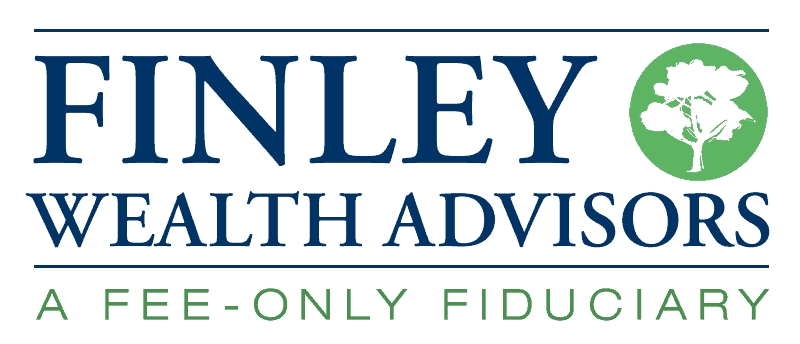Guide To Sustainable Investing

Where may we send on your guide?

If there’s one trait most of us share, it’s a desire to make the world a better place. No wonder there’s so much interest in sustainable investing. Who wouldn’t want to try to earn decent if not stellar returns, while contributing – or at least causing less harm – to the greater good?
But what is the greater good? What is a decent return? How do we make it all happen?
Financial history leaves us optimistic that, over time, best practices are likely to emerge out of the bubbling brew that is our capital markets. For those who would rather not wait, it can be hard to identify a clear path forward. As a relatively new and fast-growing field, sustainable investing is crowded with opportunities and challenges, perspectives and priorities, strategies and terminology.
“I believe that by combining the heart and the head – by applying data and reason to altruistic acts – we can turn our good intentions into astonishingly good outcomes.”
As we grapple with integrating subjective values into objective financial planning, we are inspired by “Doing Good Better” author William MacAskill:
Let’s be clear: We are NOT here to direct your personal moral compass. Rather, we’d like to offer objective insights, rooted in our evidence-based investment approach.
An evidence-based outlook helps confirm when a theory appears to be robust in reality. It also suggests when a promising plan may not pencil out as hoped for – no matter how well-intended it may be.
Equipped with solid evidence in an often emotionally charged arena, you will be better positioned to make rational choices and informed decisions that best fit you, your heartfelt values, and your financial goals.
First things first. While you’re likely to find various terms sharing similar definitions in this crowded field, we’ll refer to the broad subject as “sustainable investing.”
Call it what you will, recent research has found that different investors embrace sustainable investing for different reasons. Your own priorities govern the type of sustainable investing that should best align with your personal goals:
Some investors may not be as interested in investing “morally,” but may do so anyway if they expect to earn higher returns from stronger-performing companies.
Other investors may not care whether sustainable investing brings higher expected returns, as long as they can shun “bad” companies and/or invest in “good” ones.
Most investors fall somewhere in between: They want to earn solid returns (or at least not lose money) while investing in principled ways.
As described in “Why and How Investors Use ESG Information” (a University of Oxford/Harvard University paper to be published in the Financial Analysts Journal), academics and practitioners alike typically turn to an organization’s Environmental, Social and Governance (ESG) ratings to try to quantify levels of sustainability.
Again, precise labels may vary in the various literature.
Following are some of the ways the industry applies ESG ratings into sustainable investment strategies:
Active Ownership
Employing “shareholder power” to try to actively improve a company’s ESG performance (engaging senior management, submitting proposals, proxy voting, etc.)
Negative Screening
Explicitly excluding firms with low ESG ratings (“This company is too ‘wicked’ to belong in my portfolio.”)
Positive Screening
Explicitly including firms with high ESG ratings (“This company is at least ‘good enough’ to belong in my portfolio.”)
Inclusion Strategies
Integrating ESG data into existing evidence-based analyses, melding the information into a systematic, total portfolio management strategy
ESG Investing – ESG investors are more likely to emphasize inclusion strategies, which complement a general evidence-based investment approach. In other words, evidence-based ESG funds should help investors continue to incorporate sound portfolio construction principles (such as asset allocation, global diversification and cost control), and minimize less-efficient tactics (such as picking or avoiding specific stocks or sectors based on forecasts or popular appeal). ESG fund managers also may engage in active ownership on behalf of their shareholders.
Socially Responsible Investing (SRI) – SRI funds are more likely to use screening strategies that involve making security- or sector-specific judgments or forecasts.
Impact Investing – Impact investors are on a mission to not just invest in a venture, but to become an altruistic partner in it. Say, for example, you donate to a GoFundMe® campaign seeking to create an eco-friendly alternative to plastic water bottles. You’ve just become an impact investor. On a grander scale, high-net-worth investors may take on private equity or debt structures with an eye toward making an impact with their funding.
As proposed in this innovative paper, “Sustainable Investing: From Niche to Normal,” it depends whether you are more value- or values-driven. The paper explains that value-driven investors “put financial return first, BEFORE any other issues are addressed,” while values-driven investors will “consider financial return AFTER the investors’ values have been satisfied.”
ESG investing focuses more heavily on value – i.e., financial outcomes – factoring in ESG ratings when the evidence suggests they might improve on expected returns (or at least not detract from them).
Impact investing seeks to fund a cause with less regard for how the “investment” works out. Hint: If you’re mostly in it for the money, you might not be in the right place.
SRI investing falls somewhere in between. You don’t want to lose your shirt, but you may not mind giving up some expected return if you expect it to do a lot of good.
Sustainable investment strategies aren’t mutually exclusive either. For example, you could incorporate ESG investing into the core of your evidence-based portfolio, while participating in impact investing with some of your discretionary income.
Before sustainable investing existed, investors who were philanthropically inclined had little choice but to seek their financial returns through traditional investing.
They had to separately express their personal values by donating to their charities of choice.
Today, solutions are coming into focus for those who would like to combine these two, formerly disparate interests. That said, while evidence-based ESG investing holds much promise, it remains a relatively new field of study.
Challenges and opportunities abound as we seek to create robust data and enhanced analyses to guide the way – in theory and in practice.

First the promising news: As we described earlier, there already are ways to factor in ESG ratings – here and now.
Practitioners also continue to explore how impact investing (i.e., more direct involvement in corporate governance) may lead to improved outcomes for all concerned.
On both fronts, we are optimistic that evidence-based ESG investing can grow increasingly relevant as it matures and melds into our existing best practices. That said, we face a noteworthy challenge in this still-nascent field:
Strong, time-tested company reporting standards remain a work in progress among ESG practitioners.
For example, “Why and How Investors Use ESG Information” suggests one of our biggest decision-making challenges is “the lack of comparability of reported information across firms.” The report further notes, “qualitative comments confirm that a lack of standardization and quantification are the main obstacles to ESG data integration.”
To be fair, strong company reporting standards are a challenge for any evidence-based investment approach. But it can be especially daunting when an approach is relatively new and advancing faster than the rigor of proper academic analysis requires. Let’s explore three of the “standard” growing pains sustainable investing faces: building robust benchmarks, gathering consistent data and cultivating solid research.
Just as we have standard benchmarks/indexes for other purposes (such as tracking US large companies, global bonds, or emerging market real estate), providers have responded to the burgeoning interest in ESG ratings by offering a growing collection of ESG benchmarks for “scoring” various organizations’ sustainable practices. Established providers include MSCI, Bloomberg, Thomson Reuters and others. There are also a plethora of relative newcomers, each offering its own approach and perspective.
Given the assortment, a company’s ESG data may receive widely different “thumbs up” or “thumbs down” scores, depending on who is doing the rating, and to what aim. For example, this Wall Street Journal explains: “The real complexity comes in the question of what counts as ‘good.’” The article offers an illustration: “[The] global head of ESG research at MSCI, says the aim of its ratings is to highlight financially relevant [ESG] risks; FTSE, by contrast, is more focused on helping investors change corporate behavior.”
It’s not necessarily bad or wrong for different rating companies to rank the same data in various ways. Their varied opinions contribute to efficient market pricing. But it does mean you (and your advisor) will want to understand the differences among various ratings, and what they signify, so you’re not inadvertently comparing your “apple” results with “orange” benchmarks.
This leads us to our next point …
Rating agencies, fund managers and investors face a common challenge: Some of the data used to score a company’s ESG activities may be more or less dependable to begin with.
Some standards exist for how and what a company should report with respect to its ESG practices. For example, as reported in the aforementioned “Sustainable Investing: From Niche to Normal,” a CDP (Carbon Disclosure Project) is aimed at encouraging companies to report their greenhouse gas emissions; the UK requires all its listed companies to do the same. And “GRESB is an investor-driven organization of 250 members who voluntarily report on the ESG performance of real estate portfolios.”
There are many other examples, and growing demand may further accelerate the movement toward more standardized reporting. But for now, ESG reporting remains mostly a voluntary endeavor. As reported in a June 27, 2018 Financial Advisor piece, “Advisors Say ESG Compliance Is Hard To Verify,” Cerulli Associates surveyed more than 400 advisors and asset managers and reported that the vast majority felt challenged by “the fact that companies provide limited or selective information about their efforts to meet environmental, social and governance standards,” and that “the information they are given is too subjective.”
Also, “ESG” is not one thing – it’s three. Not surprisingly, environmental, social and governance standards are developing at different rates, based on various demands and practicalities. As described in the aforementioned Sustainable Investing Report, many environmental metrics are becoming increasingly standardized, but investors should be more cautious about social metrics, which often represent “highly qualitative issues.” The authors note, “Governance is the most well-researched factor. The data has been in company filings for decades.”
Some investors may also wish to incorporate or avoid other values-based characteristics in their investments – such as religious or political affiliations. For these, quantifiable reporting standards may take even longer to create, if they’re created at all.
There’s one more avenue to explore. How do we balance an investor’s desire to invest “ethically” with our fiduciary duty to advise them according to their highest financial interests?
The goal is simple enough: We’d like to provide both. Existing studies and practical applications suggest we can.
That said, we’re still early in the process. By definition, it takes years, if not decades, to determine whether evidence-based theories test out in reality – through bull markets and bears; here and abroad; and across stocks, bonds and other asset classes. The reality is, evidence-based sustainable investing is too new to have experienced this optimal degree of due diligence.
For example, consider “sin” stocks versus ethical investments. Which have actually delivered better returns under what conditions, and with what risks? To date, we continue to see energetic debates and compelling evidence contributing to our understanding of these important issues. Given the level of investor interest, academics and practitioners alike are working to resolve the various riddles and create the necessary body of evidence to achieve this high standard of excellence.
Those who would rather not wait deserve solid advice on how to make the most of existing sustainable investment solutions, come what may as the future unfolds.
That said, the field is young. We will continue to collaborate with other evidence-based professionals and academics to discover and deliver increasingly effective ways to incorporate sustainable investing into investors’ globally diversified portfolios.
We’ve only just begun!
Whether you’d like to get started right away, or simply remain informed, we stand ready to assist.
Schedule a call with us anytime to continue the conversation.
If you are seeking sustainable investing advice, we hope you’ll be in touch with us to learn more. We are proud to be a fiduciary, fee-only Registered Investment Advisor firm offering an evidence-based investment strategy and guided by your highest financial interests.
Here are three ways to let us help you:



Amber Braatz
MBA
Financial Advisor
Join our mailing list to build confidence in your financial future and keep learning more about us and our philosophy

Schedule a complimentary call or appointment to discuss how we can help you achieve your life goals